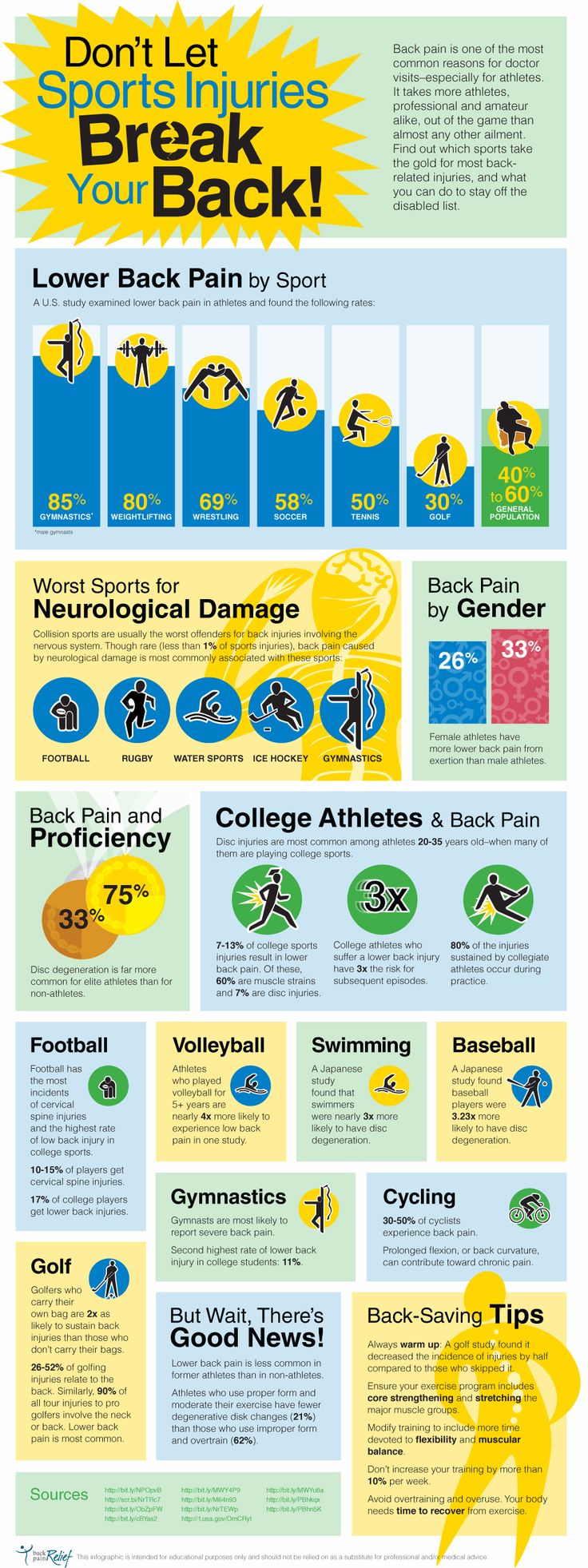Lower back pain is something that will affect many people at some stage of their lives, but in this article I want to discuss how common lower back injuries are in the sporting world because I have just discovered a new infographic that has some interesting facts and figures:

First of all, it is interesting to note that female athletes are more likely to experience lower back pain than male athletes (33% v 26%) because I would have automatically assumed that men were much more likely to develop back problems than women because of their extra strength, intensity and exertion.
It was also interesting to see which sports cause the most damage because whilst it is unsurprising that 80% of weightlifters experience lower back pain, I wouldn’t have thought that 85% of gymnasts experience the same pains because their bodies are so flexible. However I guess all of the vigorous training and the various different body movements are bound to cause issues over time.
What is also noticeable is that more serious back injuries are most likely to occur in those people who play American football, rugby, water sports or ice hockey, which is unsurprising because these are all impact sports where the back could easily be injured as a result of collisions.
The statistics for individual sports were quite fascinating as well because swimmers have been found to be 3 times more likely to have disc degeneration, with baseball players 3.23 times more likely, whilst 30-50% of cyclists experience back pain at some point because of prolonged back curvature, which I can certainly relate to myself.
In addition, 90% of all injuries on the professional golf circuit relate to the neck or back, with the most notable one being Tiger Woods because he has had multiple back operations and still continues to have recurring injuries that have effectively ended his career. Plus for amateur players, carrying your own bag doubles your chances of sustaining a back injury.
On a more general level, it has also been found that elite athletes are far more likely to experience disc degeneration than non-athletes (75% v 33%), but it is much less common amongst former athletes, presumably because they have learned how to train properly and know which activities are likely to cause pain.
Indeed this infographic points out that athletes who use proper form and avoid overtraining have fewer degenerative disc changes those those who don’t (21% v 62%).
Finally, what I like about this infographic is that although it has a lot of detailed statistics, it also leaves you with some useful tips that will help you to prevent any back problems.
For example, it stresses the importance of warming up, and points out that any exercise program should include core strengthening and stretching exercises, with more time devoted to flexibility and muscular balance if you want to avoid injury.
In addition, you need to avoid overtraining and give your body time to recover between workouts, and shouldn’t increase your training by more than 10% per week, which is all good advice.
Leave a Reply